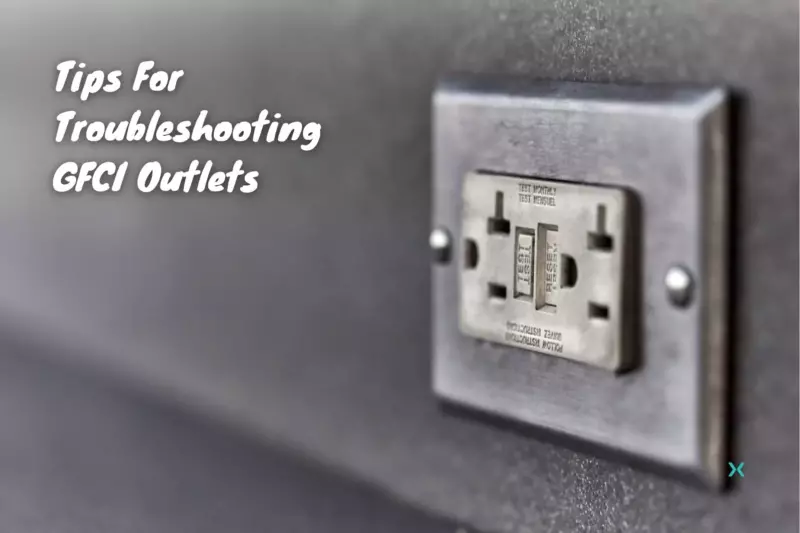You may have noticed outlets with two little buttons at certain locations around your home. You probably know that these are called GFCI outlets.
And if you’re really on the ball, you’ll know that GFCI stands for Ground Fault Circuit Interrupter. These are critical electrical safety devices.
If you have a GFCI outlet that has no power, it can be difficult to narrow down the problem.
Table of Contents
⭐ What is a GFCI Outlet?
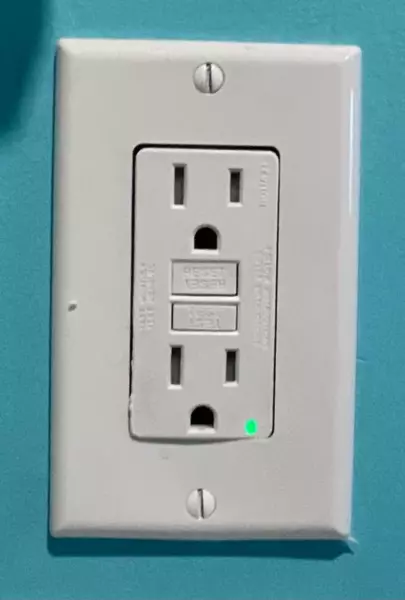
As mentioned, GFCI stands for Ground Fault Circuit Interrupter. The “Interrupter” is a small breaker built into the outlet, which can cut power when ground faults are detected.
But if the GFCI circuit is already on a breaker in the main electrical panel, why is an extra breaker needed in the outlet itself?
Some electrical appliances have a large in-rush of electricity at the time of start-up.
You may have noticed the lights dim briefly when your microwave or dryer turns on.
For this reason, a standard breaker allows for a few seconds of electrical current overload.
A GFCI receptacle is more sensitive than a standard breaker.
When a ground fault occurs or any type of electrical fault, the GFCI outlet trips immediately, preventing any electrical shock.
This prevents the electrical current from traveling along an unintended path, such as a human.
GFCI outlets which are working properly are important for preventing electrical accidents and keeping your family safe.
Electricity can be dangerous around water.
The National Electrical Code in the US requires GFCI outlets in areas with a higher risk of electrical shock due to water.
Typically, this means bathroom outlets and exterior outlets, and possibly other locations such as unfinished basements.
When you drop your hair dryer into the bathroom sink, the GFCI outlet will trip immediately, preventing electrical shock and possibly saving your life.
Instead of giving you an electric shock, the outlet detects that there is a ground fault occurring.
Because they aren’t standard outlets, when a GFCI outlet loses power, it can be more difficult to identify the issue.
Here are some tips to help you troubleshoot a dead GFCI outlet.
📗 Related Reading: Homeowners Guide to Electrical Safety
1. The Reset Button
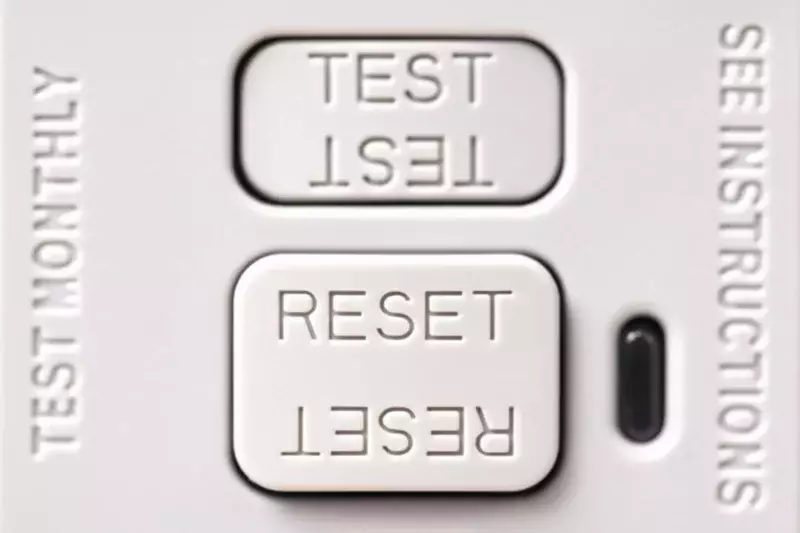
GFCI outlets have two buttons, “Test” and “Reset.”
Push the Test button, and with a mighty “click,” the outlet will go dead.
The Reset button resets the circuit interrupter and, ideally, restores power.
Your GFCI outlet may simply need to be reset.
Press the button firmly in until it clicks, then test the outlet.
Press the reset button in firmly until it locks in place.
Once the button is all the way in and holding, test the outlet.
If it’s still dead or the button won’t hold, you have bigger issues. In that case, read on.
2. Check Upstream
Electricians refer to parts of a circuit as “upstream” and “downstream.”
Upstream of a point is toward the power source. What is upstream powers what is downstream.
If an outlet is dead, the problem might not be at the outlet itself.
There could be a problem with the electricity from upstream on the same circuit.
⚡ Check The Breaker
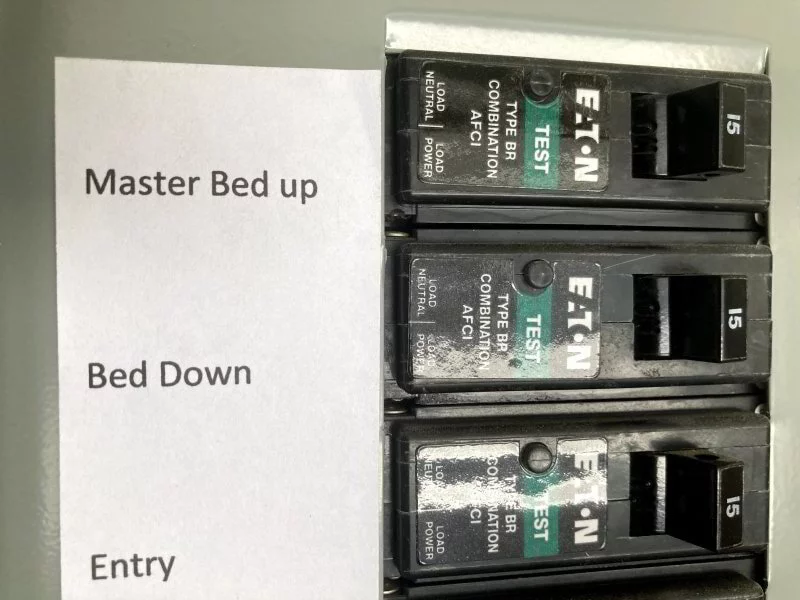
Like any standard outlet, your GFCI outlets are on a circuit that is on a breaker in your main electrical panel.
If the circuit breaker is tripped, the whole circuit is shut off, and the outlet itself will be dead.
Check your panel, and if the circuit breaker is tripped, move the handle firmly to the Off position, then firmly to the On position.
Another possibility is that the GFCI protection required for the outlet is actually on the breaker.
A special GFCI breaker, usually with a white test button, can be installed.
This detects ground faults rather than the outlets. In this case, simply resetting it should get it working.
Once the circuit is powered, check the outlets.
If the outlet is now powered, great, simple fix. If not, then you’ve got more work to do.
⚡ Check Other GFCI Outlets
There are two sets of terminal screws on a GFCI outlet.
The line terminals are for the electricity coming into the outlet (upstream), and the load terminals are for the rest of the circuit downstream.
When the devices downstream are fed from the load terminals, they are GFCI protected.
If your GFCI outlet is shut off and won’t reset, look around for other GFCI receptacles with the same problem. A likely location is other bathrooms or any wet areas.
One of these may be tripped, cutting power to any downstream outlets. If this is the case, simply reset the GFCI outlet in question.
⚡ Light Switches
In bathrooms in some older homes, power first comes to the light switch, and from the light switch to the light, the fan, and yes, the outlet.
In homes with this older style of electrical wiring, the light switch controls the electricity to the outlet.
If you’re testing the outlet with the lights off, that may be the problem.
Just turn on the light switch, and wallah, “Let there be light.” And power.
⚡ Ask The Neighbor’s
Ask a professional electrician, and you might hear a familiar story of a customer who calls to complain of a dead electrical outlet, only to discover that the whole neighborhood is in a power outage.
Check if everything else in the house is powered; if not, check with your neighbors.
If both you and your neighbor don’t have power, your GFCI outlet isn’t the issue.
3. Faulty GFCI Outlet or Reset Mechanism
Ground fault circuit interrupters rely on a spring mechanism, which can become worn or rusty over time.
Press the test button, then try the reset button.
You may feel that the spring is very stiff or have a crunchy sound.
This is a sign that the spring mechanism is wearing out.
If the mechanism is too far gone, the button will fail to latch. The outlet needs to be replaced with a new GFCI outlet.
If you have experience with electrical work, it’s fairly easy to install a GFCI. If you don’t have the knowledge to install GFCIs, contact a qualified electrician.
4. Loose Or Improper Wiring
If the wires are loose, this may result in small arcing, which the outlet will detect as a ground fault.
Likewise, if wires are connected to incorrect terminals, the GFCI outlet will trip.
Fixing either of these problems are fairly easy tasks, but require caution.
Although the outlet may be dead, the wires could still be live.
Before you remove the outlet plate and begin work, make sure the breaker is off, and check with a voltage tester.
If you aren’t comfortable working with electricity, contact a qualified electrician.
⚡ Incorrect Wiring
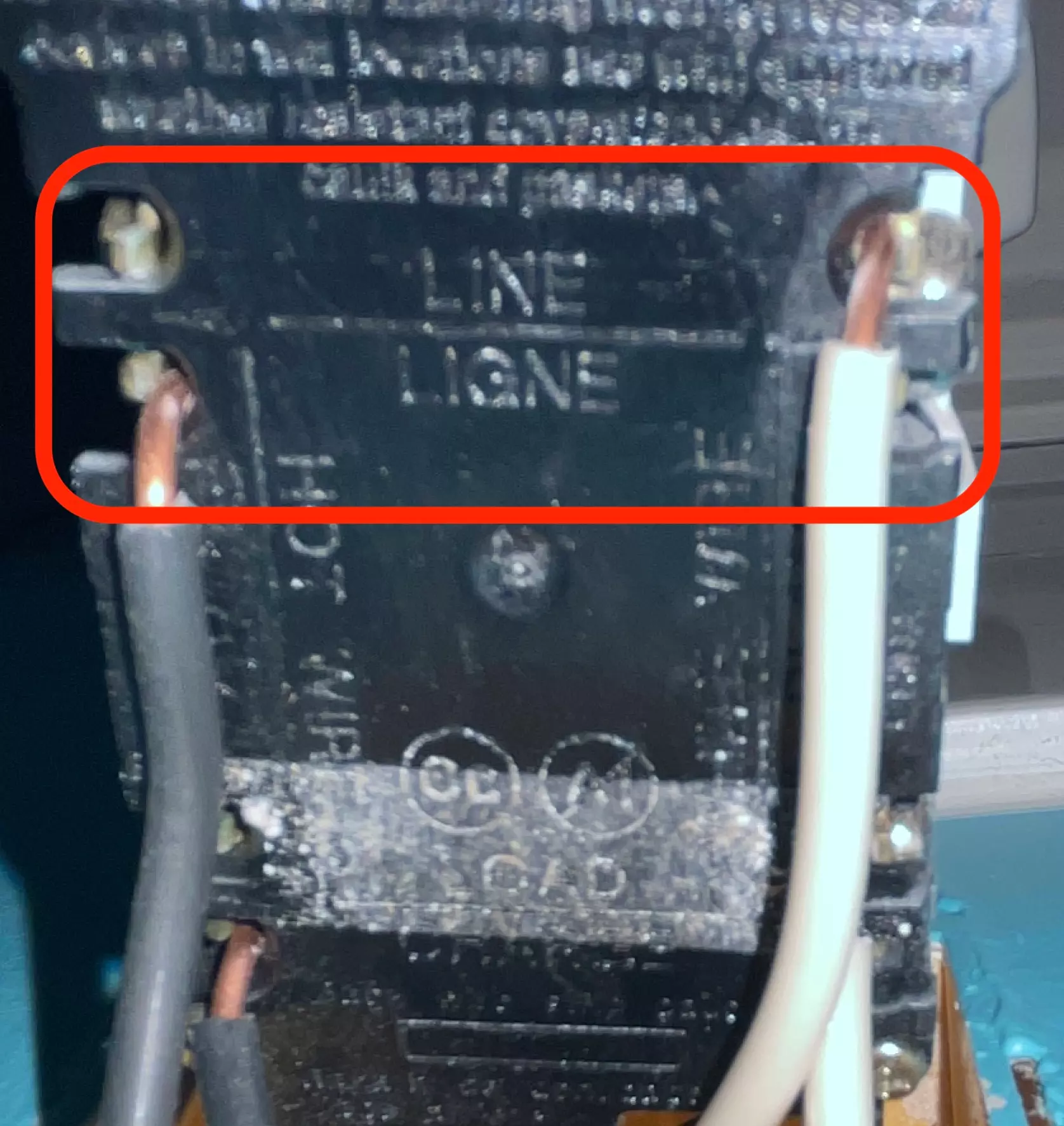
A GFCI outlet has two sets of terminals, Line and Load, each with a silver and gold terminal screw.
The wires supplying power from upstream need to be connected to the Line terminals, and the set of wires continuing downstream to the outlet need to be connected to the Load terminals.
In each set of terminals, the neutral (white) wire goes on the silver screw, and the hot (black) wire goes on the gold screw.
The outlet will detect a fault if the wires are not on the correct terminal.
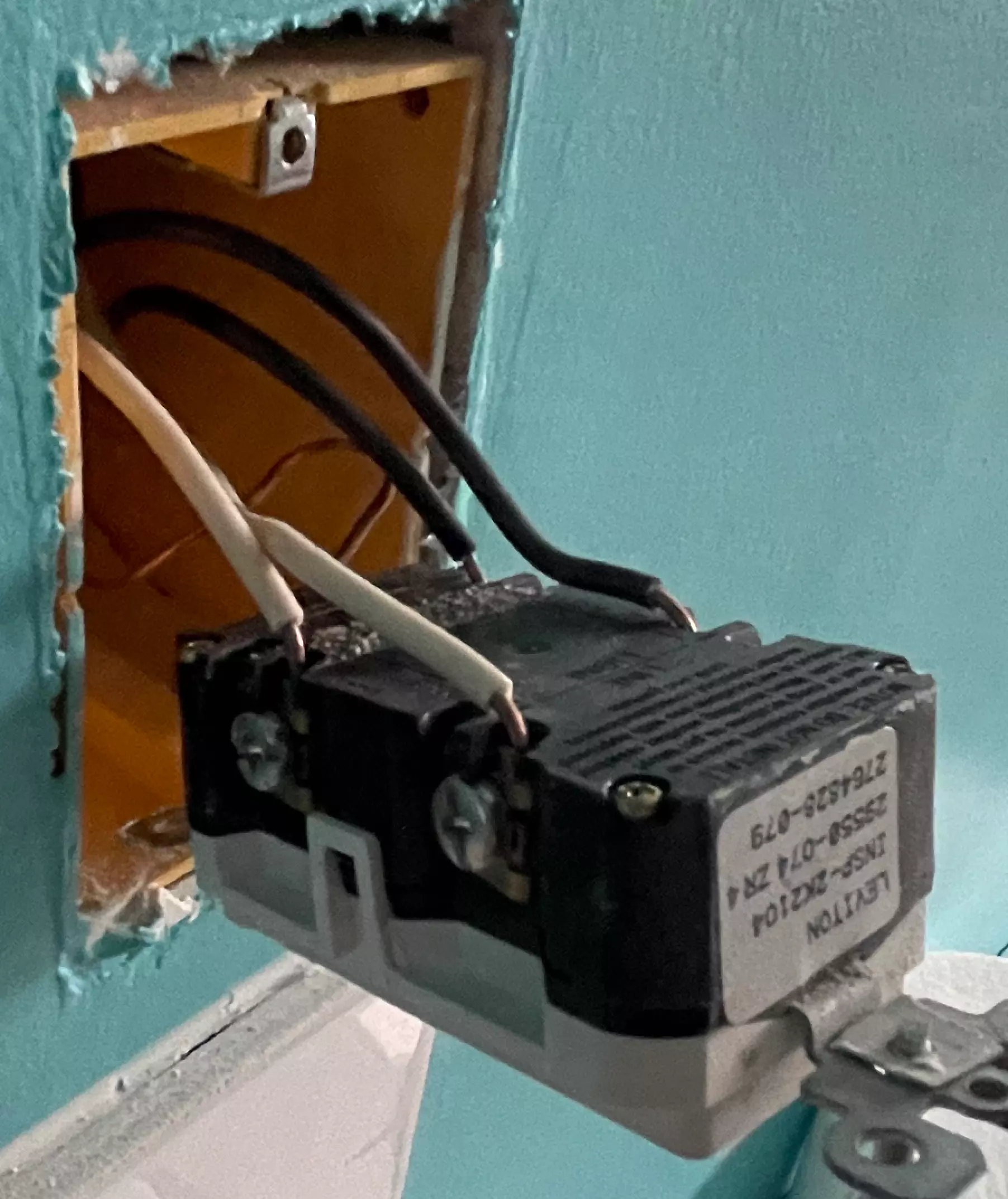
⚡ Loose Wiring
If the terminal screw was not fully tight at installation, it might slowly become looser over time due to the continual heating and cooling.
If there were any cracks or damage to the wires, the heating and cooling over time could break the wire.
Once you have killed the circuit and confirmed with a voltage tester or plug tester, remove the outlet.
Then, remove each wire from under its terminal screw, cut off the exposed copper, and strip the insulated wires.
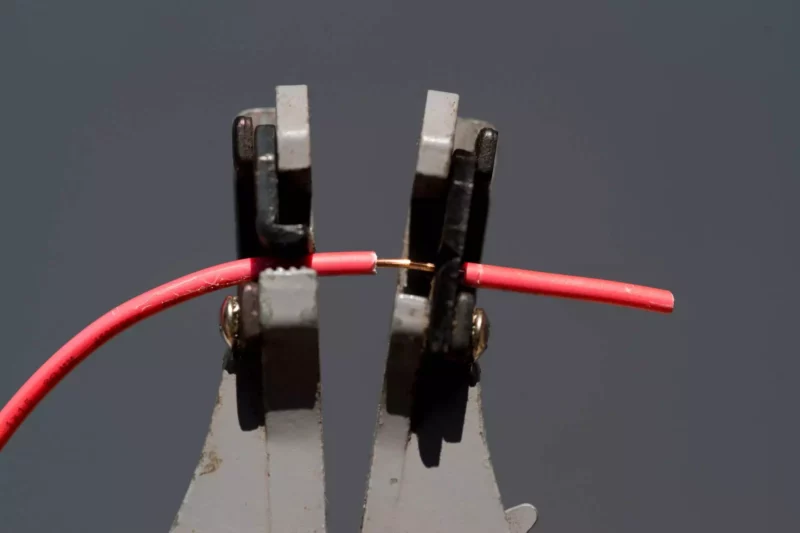
This will ensure that any damaged wire is now replaced with healthy wire.
Replace the newly stripped wire under its terminal screw, and tighten it securely.
5. Defective Devices
The purpose of a GFCI outlet is to detect electrical faults and save your life.
If your GFCI outlet keeps tripping, it might be doing its job.
The specific appliance or device you are trying to use may have an internal fault.
If this is the problem, it is likely that the wiring has come loose and is touching the outer casing of the appliance.
In this case, you could easily get shocked simply by holding it.
Try plugging in another device or, ideally, a plug tester.
⭐ Conclusion
GFCI outlets are an important and required safety feature in all homes.
You may have many GFCI outlets in your home, not only for your bathroom receptacles but also often in laundry rooms, unfinished basements, crawl spaces, kitchens, wet bars, garages, other areas, and anywhere within close proximity to wet locations.
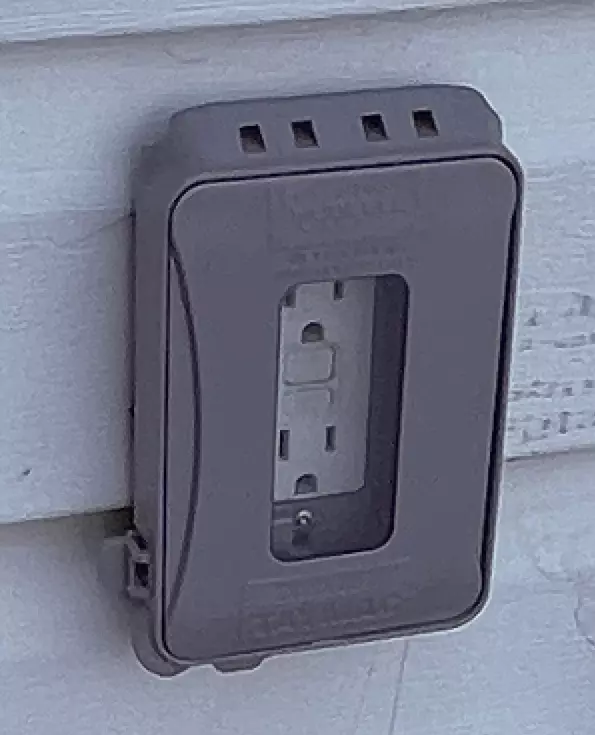
Although their circuit-breaking capacity and increased sensitivity help protect people from electrical shocks, it also leaves them prone to more malfunctions.
When a ground fault circuit interrupter outlet loses power, there is a wide variety of possible causes, but with some good information and an understanding of how they work, you should be able to narrow down the problem.
As always, working with electricity can be dangerous, and you can be severely shocked.
Contact a professional electrician if you have any concerns or need help installing GFCI outlets or replacing an existing outlet with GFI outlets.
Want to learn more about your home’s electrical system? Feel free to check out our other electrical articles!
Related Reading: Top 10 Common Home Electrical Problems and Solutions

